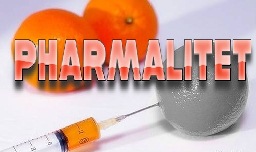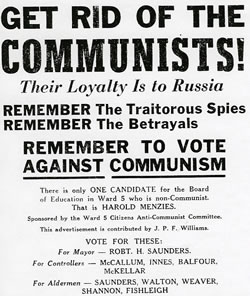
Saturday, November 30, 2013
Depeched video of the week
Labels:
another magic cure,
cognitive,
music of the week,
real science,
video
Friday, November 29, 2013
Yanek makes history!
Labels:
another magic cure,
cognitive,
deconstruction,
evidence based medicine,
future foresight,
masterpiece of the day,
music of the week,
nice idea,
paradigm,
politics,
real science
Thursday, November 28, 2013
Pourquoi pas
Labels:
another magic cure,
cognitive,
deconstruction,
evidence based medicine,
future foresight,
magic,
masterpiece of the day,
music of the week,
nice idea,
Partisan of Death Valley,
real science,
video
Wednesday, November 27, 2013
The Masterpiece!
Labels:
another magic cure,
cognitive,
deconstruction,
evidence based medicine,
future foresight,
magic,
masterpiece of the day,
nice idea,
paradigm,
Partisan of Death Valley,
real science,
semantic,
video
Tuesday, November 26, 2013
Theranostics - WTH? Another magic cure?
Labels:
another magic cure,
Big Pharma,
chaos,
cognitive,
deconstruction,
future foresight,
shit of the day,
targeted failure,
video
Be happy!
Жила-была бедная еврейская семья.
Детей было много, а денег мало.
Бедная мать работала на износ – готовила, стирала, и орала, раздавала подзатыльники и громко сетовала на жизнь.
Наконец, выбившись из сил, отправилась за советом к раввину: как стать хорошей матерью?
Вышла от него задумчивая. С тех пор ее как подменили.
Нет, денег в семье не прибавилось. И дети послушнее не стали.
Но теперь мама не ругала их,а с лица ее не сходила приветливая улыбка.
Раз в неделю она шла на базар, а вернувшись, на весь вечер, запиралась в комнате.
Детей мучило любопытство. Однажды они нарушили запрет и заглянули к маме.
Она сидела за столом и …пила чай со сладким цимесом!
"Мама, что ты делаешь? А как же мы?"- возмущенно закричали дети.
"Ша, дети! – важно ответила она.- Я делаю вам счастливую маму!"
And the bonus song:
http://www.youtube.com/watch?v=04kILUHn-wo
Детей было много, а денег мало.
Бедная мать работала на износ – готовила, стирала, и орала, раздавала подзатыльники и громко сетовала на жизнь.
Наконец, выбившись из сил, отправилась за советом к раввину: как стать хорошей матерью?
Вышла от него задумчивая. С тех пор ее как подменили.
Нет, денег в семье не прибавилось. И дети послушнее не стали.
Но теперь мама не ругала их,а с лица ее не сходила приветливая улыбка.
Раз в неделю она шла на базар, а вернувшись, на весь вечер, запиралась в комнате.
Детей мучило любопытство. Однажды они нарушили запрет и заглянули к маме.
Она сидела за столом и …пила чай со сладким цимесом!
"Мама, что ты делаешь? А как же мы?"- возмущенно закричали дети.
"Ша, дети! – важно ответила она.- Я делаю вам счастливую маму!"
And the bonus song:
http://www.youtube.com/watch?v=04kILUHn-wo
Labels:
another magic cure,
cognitive,
deconstruction,
evidence based medicine,
magic,
masterpiece of the day,
nice idea,
real science,
video
Monday, November 25, 2013
Fake?

Labels:
another magic cure,
chaos,
cognitive,
deconstruction,
failure,
nice idea,
politics,
question of the day,
real science
The treatment of lung cancer is a complex dance
Opportunities in Lung Cancer Therapies
By Declan Fallon |
November 22, 2013
Non-small-cell lung cancer is responsible for 80% of all lung cancer cases. Treatment for this type of cancer has a market value of more than $4 billion, which is expected to rise to near $7 billion by 2019. There are a number of treatments available, including Avastin from Genentech/Roche, Alimta from Eli Lilly, Tarceva from Genentech/Astellas Pharma, and Iressa from AstraZeneca (NYSE: AZN ) .
Avastin is used to treat a number of cancers and is the big fish in the pool. It generated global sales of $6.1 billion in 2012 and $3.4 billion for the first half of 2013, a 12% rise. Avastin is the highest sales-generating product for Roche and benefits both from growth in existing markets and from being a new therapy to treat different cancers.
Alimta is often used in combination with other treatments but is primarily a lung cancer drug. Its global sales of $2.6 billion accounted for 11% of Eli Lilly's 2012 revenues, which was a 5% gain on 2011 and a 13% gain for the U.S. market.
The other common treatments enjoy smaller shares of the market. Tarceva, a lung and pancreatic cancer treatment, had global sales of $1.4 billion in 2012. Iressa, on the other hand, generated a more modest $611 million in revenues.
It is within this market that new drugs are hoping to find an advantage. The primary driver for new therapies will always be better efficacy with fewer side effects, but genetic factors are increasingly become deciding factors in a therapy's success.
The phase 3 study for selumetinib, developed in partnership between AstraZeneca (NYSE: AZN ) and Array Biopharma (NASDAQ: ARRY ) , is finally under way. Selumetinib's advantage is that it is compatibility with other, potentially more effective, cancer treatments. Selumetinib is undergoing studies for patients with the KRAS mutation, which AstraZeneca estimate accounts for 25% of the non-small cell lung cancer patients. Patients with the KRAS mutation do not respond well to existing treatments, so Selumetinib has the potential of been first through the door as a treatment option.
Initial results have been positive, but AstraZeneca is also studying benefits of the drug for use in non-KRAS mutation patients. While there is no timeline for the release of a commercial drug, AstraZeneca's commitment to the treatment has been made clear with the 45 studies it has performed using selumetinib.
Mutation in another gene, EGFR (which is mutually exclusive to the KRAS mutation), can also lead to certain cancers including lung cancer. Primary drug therapies, Tarceva and Iressa, were developed to target lung cancers of patients with the EGFR mutation. Unfortunately, associated mutations can interfere with these treatments in EGFR-positive patients.
It's in this space that we find Clovis Pharmaceuticals (NASDAQ: CLVS ) , a $1.4 billion market cap company that is effectively a lung and ovarian cancer biopharmaceutical company. Its research program is built around CO-1686, a treatment that is not only geared toward patients with the EGFR mutation but also the resistance mutation T790M. It's this mutation that impedes the action of Tarceva and Iressa in EGFR-positive patients.
Approximately 50% of lung cancer patients with the T790M mutation do not see a benefit from Tarceva and Iressa therapies. There are currently no approved treatments for patients with the T790M mutation, meaning that there is a large commercial market opportunity for companies capable of isolating a successful treatment.
Clovis has reported a respectable initial response to its CO-1686 treatment, albeit in a very small sample; eight of nine evaluable patients experiencing tumor shrinkage greater than 10%. The company is also looking at an improved formulation which would require lower dosages of the drug, reducing the potential for side effects that are common with other EGFR therapies. This new formulation has not resulted in any side effects to date, although dosage studies remain under way. The company is looking to early 2014 to begin a Phase II study using the new formulation. The goal is to begin an initial registration study for the first half of 2014.
Ariad Pharmaceuticals (NASDAQ: ARIA ) had worked the T790M angle with a phase 1 study in 2011 and a phase 2 study earlier this year. AP26113 is a dual-action treatment, targeting lung cancers caused by two mutations; one of these was EGFR. The company noted in its most recent conference call that it was continuing with its AP26113 studies. The company anticipates that it will have sufficient clinical data to fully evaluate the potential for its use in EGFR/T790M-positive lung cancer patients by the end of this year.
If the company can deliver positive findings for AP26113, it should certainly boost what is now only a $470 million market cap company.
Conclusion The treatment of lung cancer is a complex dance of environmental and genetic factors, but the financial reward for those companies able to offer effective treatment is substantial. After all, as long as there are tobacco products to smoke there will always be lung cancers to treat.
Despite a crowded market of therapies, none are able to offer an all-encompassing solution. This creates opportunities for companies to build a niche with treatments that could comfortably generate $1 billion to $2 billion in annual sales. Some of the smaller names in the sector are worth watching, but even for a larger company it looks like there's a strong revenue stream to tap right now.
Labels:
another magic cure,
Big Pharma,
bubble,
deconstruction,
future foresight,
nice idea,
numbers
Causes of untimely death
Labels:
cognitive,
deconstruction,
masterpiece of the day,
nice idea,
numbers,
Partisan of Death Valley,
real science
Sunday, November 24, 2013
Interview with Peter Gøtzsche
Labels:
Big Pharma,
bubble,
cognitive,
deconstruction,
depression,
evidence based medicine,
failure,
future foresight,
paradigm,
politics,
real science,
video
Saturday, November 23, 2013
Let's outsmart your colleagues!!! 6th International Conference on Drug Discovery and Therapy
1. Academic CRO/Industrial collaborations in drug discovery
2. Anti-Cancer Drug Discovery & Therapy
3. Anti-Infectives
4. Bioactive Lipids
5. Biologics
a. Asymmetric Synthesis
b. Organometalic Chemistry
c. Carbohydrates
d. Spectroscopy
e. Medicinal Chemistry
7. Cardiovascular Drug Discovery & Therapy
8. Clinical Trials and Regulatory Affairs
9. Combinatorial Chemistry
10. CNS Drug Discovery & Therapy
11. Diabetes and Obesity Drug Discovery & Therapy
12. Drug Delivery & Targeting
13. Drug Discovery in Preclinical Research
a. De-risking Drug discovery
b. Hit to Lead and Lead Optimization
14. Drug Metabolism
15. Enabling Technologies
16. Genomics
17. Green Techniques for Medicinal Chemistry
18. High-throughput Screening& Laboratory automation
19. Hot Topics in Drug Targets
20. Hot Topics in HIV Research
21. Hot Topics in Medicinal Chemistry
22. Hot Topics in Natural Products
23. Inflammation and Immunology
24. Innovative Drug Discovery and Nanotechnology
25. In-silico Drug Design and in-silico screening
26. Medical Imaging
27. Nutraceutical Drug Discovery & Therapy
28. Pharmaceutical Biotechnology
29. Pharmaceutical Research& Development
a. Successful Drug Discovery from the Research Lab to the Marketplace
i. First disclosure of Clinical Compounds
ii. Case Histories of Drugs on the Market
b. Global Roundup of Pharmaceutical Research capabilities and Opportunities
i. Middle East
ii. China
iii. Japan & Far East
iv. North America
v. Europe
vi. South America
vii. India & Asia
viii. Africa
c. Global Discovery Outsourcing
d. Generic Pharmaceuticals: Challenges and Opportunities
e. Regulatory Affairs
f. Other Areas of Pharmaceutical R & D
30. Pharmacogenomics
31. Process Chemistry and Drug Manufacturing
32. Protein and Peptide Sciences
33. Proteomics & Bioinformatics
34. Pulmonary Drug Discovery& Therapy
35. Recent Advances in Patient Treatment and Care
36. Recent Advances in Spectroscopy
37. Regenerative Medicine
a. Stem Cells
b. Gene Therapy
c. Tissue Engineering
d. Recent Developments in Regenerated Medicine
38. Stereoselective Synthesis of Bioactive Compounds
39. Structural Biology
40. Traditional Chinese Medicine
41. Translational Medicine
42. Women’s Health Drug Discovery & Therapy
Friday, November 22, 2013
Ukraine will be free???

Labels:
another magic cure,
cognitive,
deconstruction,
future foresight,
masterpiece of the day,
music of the week,
nice idea,
politics,
question of the day,
real science,
shit of the day,
targeted failure
Targeted failure of the week. Post No 128. Reolysin
From Wiki: Reolysin® (Wild-Type Reovirus; Serotype 3 Dearing; Oncolytics Biotech), is a proprietary formulation of the human reovirus (reovirus) being developed for the treatment of various cancers and cell proliferative disorders. Reolysin is classified as an oncolytic virus, a virus that preferentially lyses cancer cells. Clinical trials have demonstrated that Reolysin may have activity across a variety of cancer types when administered alone and in combination with other cancer therapies
And do you know what?
 From here.
From here.
The Oncolytics Biotech (ONCY_) study of Reolysin in head and neck cancer patients failed. The company issued a press release Thursday claiming the Reolysin study results were positive, but CEO Brad Thompson is shading the truth.
It's easy to be confused because Oncolytics throws out a bunch of numbers in this morning's announcement to make Reolysin appear effective. It's smoke and mirrors, so let's cut through the B.S.
For starters, a brief recap of the study design. Oncolytics enrolled 167 patients with advanced head and neck cancer and randomized them to receive either 1) Reolysin plus carboplatin and paclitaxel or 2) placebo plus carboplatin and paclitaxel. The primary endpoint of the study was overall survival, with progression-free survival (PFS) and overall response rate important secondary endpoints.
This morning, Oncolytics reported results from an "intent-to-treat" analysis of 118 patients with "loco-regional head and neck cancer with or without distant metastases."
The first red flag: An "intent-to-treat" analysis cannot be conducted on a subgroup of patients. Oncolytics is omitting from its analysis 49 head and neck cancer patients with distant metastatic disease.
Why is Oncolytics dividing up patients in the study? Last year, the company claimed patients with localized disease (tumors primarily restricted to the head and neck) were responding differently to Reolysin compared to patients with cancer that had spread to distant parts of the body. How Oncolytics came to this conclusion while remaining blinded to study data has never been explained, but nonetheless, the company insisted on splitting the study into two parts, with loco-regional and distant metastatic patients analyzed separately.
On Thursday, Oncolytics reported overall survival results on 88 loco-regional patients who "did not receive additional therapy following discontinuation of study treatment." The 50 patients in the Reolysin arm reported a median overall survival of 150 days compared to 115 days in the control arm.
The second red flag: Oncolytics was supposed to report overall survival results on all 118 loco-regional patients. Instead, the company gives us results on 88 patients who didn't receive any other therapy after leaving the study. Thirty patients were disappeared from the overall survival analysis.
The third red flag: The subgroup analysis of overall survival in the 88 patients, which isn't even credible, wasn't statistically significant.
Oncolytics CEO Thompson, on a conference call Thursday morning, was asked to provide the real overall survival results from all 118 loco-regional patients. He refused. Red flag number four.
What about the overall survival analysis of the 49 head and neck cancer patients with metastatic disease? Metastatic disease is more advanced, so these patients should actually have shorter survival times than patients with localized disease.
Oncolytics says it remains blinded to the data on the metastatic patients. Call that red flag number five.
On this morning's call, Thompson made the argument that progression-free survival -- and not necessarily overall survival -- was the most important efficacy measure from the Reolysin study.
But that's not what he said in May when speaking to investors at a healthcare conference sponsored by Merrill Lynch:
The primary endpoint was and is remains overall survival, and that's event-driven. And we're currently awaiting events to get to the predicted event range to actually do the survival data. And the secondary endpoints, which we will also report on, are PFS, looking at best response, which is, in this case, but actually by RECIST, so there's really a true response rate....
That's red flag number six.
Now, about those PFS data. Oncolytics reported Thursday a median PFS of 94 days for the Reolysin patients compared to 50 days for control patients. Again, these results were just from the 118 head and neck cancer patients with loco-regional disease. The company once again "disappeared" data on the 49 metastatic disease patients.
Was this PFS result statistically significant? When asked, Thompson claimed use of "non proportional hazard ratios" to analyze results made it impossible to provide p values.
Translation: No, the PFS data were not statistically significant. Where are we now on the red flag count? Seven and eight.
I won't delve into the issues with the safety data in the Reolysin study except to point out that Oncolytics claims to have included all 167 head and neck cancer patients in the safety analysis.
If that's true, how is it possible for Oncolytics to remain blinded to efficacy results in the 49 patients with metastatic disease?
As you'd expect, Oncolytics has no answer to the question.
Labels:
Big Pharma,
bubble,
chaos,
deconstruction,
evidence based medicine,
failure,
nice idea,
paradigm,
real science,
shit of the day,
targeted failure
Thursday, November 21, 2013
Pharmaceutical innovations. Disaster. The numbers
Big Pharma is not interested in innovations (my earlier prove is here). Here is a nice articles which proves this theorem by numbers. Nice reading, a lot of numbers and figures. Highly recommended!
A quote:
A quote:
Surprisingly, nothing that companies have done in the past 60 years has affected their rates of new-drug production: whether large or small, focused on small molecules or biologics, operating in the twenty-first century or in the 1950s, companies have produced NMEs at steady rates, usually well below one per year. This characteristic raises questions about the sustainability of the industry’s R&D model, as costs per NME have soared into billions of dollars. It also challenges the rationale for major mergers and acquisitions (M&A), as none has had a detectable
effect on new-drug output. Finally, it suggests that drug companies need to be bolder in redesigning their research organizations if they are to escape the increasing pressures created by linear new-drug output and rapidly rising R&D COSTs.
Labels:
Big Pharma,
bubble,
chaos,
cognitive,
Death Valley,
deconstruction,
depression,
HTS,
investment,
nice idea,
numbers,
paradigm,
Partisan of Death Valley,
real science
Wednesday, November 20, 2013
Fake or provocation?

Labels:
another magic cure,
cognitive,
deconstruction,
nice idea,
paradigm,
politics,
shit of the day
Targeted failures of the week. Posts No 126 and 127. Varespladib and allovectin-7
The origin
Biotech investors are accustomed to reading about negative clinical trials in which an experimental drug shows no benefit for patients. On Monday night, however, we learned about two different drugs from Vical (VICL_) and Anthera Pharmaceuticals (ANTH_) which actually harmed patients.
Clinical trials are supposed to be overseen by independent monitors responsible for ensuring the safety of enrolled patients. If a drug is found to be causing patients harm, these monitors can halt the clinical trial.
The Anthera phase III clinical trial, which involved a heart drug known as varespladib, was stopped early in March 2012, although the reason given by the company at that time was "lack of efficacy."
On Monday night -- 20 months after the study was halted -- the varespladib data were presented at the American Heart Association Scientific Sessions 2013. "Lack of efficacy" is apparently a generous way of saying that patients with acute coronary syndrome were more likely to suffer heart attacks, strokes -- or even die -- following treatment with varespladib compared to a placebo.
"Despite prior experimental and observational data suggesting that varespladib would have beneficial cardiovascular effects, this trial proves the contrary, that it is actually detrimental to cardiovascular morbidity and mortality," said Dr. Stephen Nicholls, a cardiologist and investigator in the study.
Why did it take 20 months for results of the varespladib study to be known? Because Anthera refused to grant researchers access to the negative varespladib trial data, said Nicholls.
"This trial was appropriately conducted and a logical extension of the phase 2 program, and the sponsor [Anthera] did the right thing and accepted immediately the recommendation by the DSMB to terminate the study," Nicholls said, quoted in a story published by HeartWire.
"However, despite multiple requests and what was a contractual obligation, the sponsor [Anthera] did not provide the academic steering committee with the database for this study. In fact, more than a year after the cessation of this study, it was only at that point that we received the database, when the sponsor's license of the compound expired and the license actually returned to the original developer of the compound. We were very grateful that the second company saw it appropriate that these data be put in the public domain."
Anthera has not responded to a request for comment on the charges of misconduct alleged by Nicholls.
Vical's skin cancer "vaccine" allovectin-7 also ended up putting patients in harm's way, according to detailed results from a phase III study presented at a medical meeting on Monday night. Vical announced the failure of the allovectin study in August.
Allovectin caused tumors to shrink in 4.6% of patients compared to 12.3% of patients treated with chemotherapy used as a control. The difference was actually statistically significant against allovectin.
Why safety monitors allowed the allovectin study to continue even though patients were clearly being harmed was not explained.
Why safety monitors allowed the allovectin study to continue even though patients were clearly being harmed was not explained.
In a secondary analysis, the median overall survival of patients treated with allovectin was 18.6 months compared to 24.1 months for patients treated with chemotherapy.
The results of the allovectin melanoma study were delayed for years, which Vical and its supporters believed was due to the vaccine helping patients live longer.
On Monday, we learned skin cancer patients were actually better off without allovectin. Enrolling in Vical's clinical trial and getting randomized to receiving allovectin was bad for skin cancer patients.
-- Reported by Adam Feuerstein in Boston.
-- Reported by Adam Feuerstein in Boston.
Labels:
Big Pharma,
chaos,
cognitive,
deconstruction,
evidence based medicine,
failure,
HTS,
real science,
shit of the day,
targeted failure
Tuesday, November 19, 2013
Targeted failure of the week. Post No 125. Fedratinib (SAR302503)
Labels:
Big Pharma,
bubble,
deconstruction,
depression,
evidence based medicine,
failure,
shit of the day,
targeted failure
Subscribe to:
Posts (Atom)











